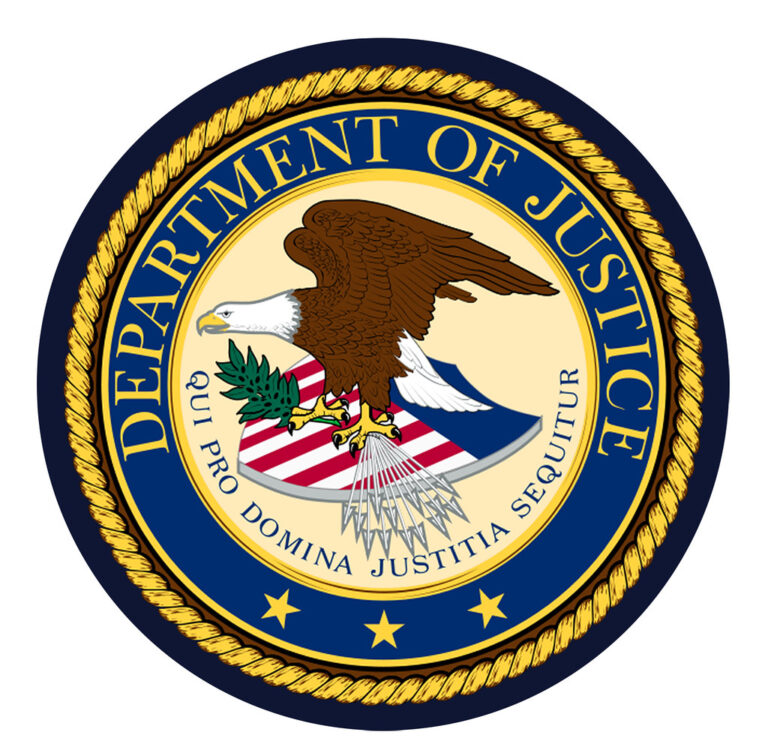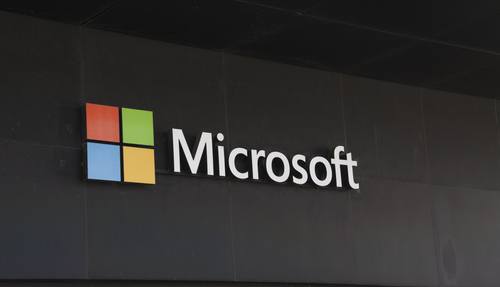Key takeaways
- Many patients face delays due to insurance denials that put lives at risk.
- Families may face huge debts when life-saving care is not covered.
- New laws could force insurers to explain why they deny treatments.
- Insurers risk high fines if more than half of appeals are overturned.
- Improved rules will help protect patients and bring greater transparency.
A young mother fought hard to save her child. Her 3-year-old daughter complained of pain during bathroom visits. Doctors first believed it was a common infection or constipation. The situation quickly became more serious as the pain grew worse. One test was needed to find the real cause. Her health insurance refused to cover an ultrasound. The mother paid six thousand dollars out of her own pocket for the test. The ultrasound revealed a tumor in the young girl’s bladder. The tumor was almost the size of a grapefruit. This discovery changed everything for the family.
Colleen Henderson, the mother, entered a long battle. The insurers did not want to cover the treatment costs. For five long years, Henderson fought UnitedHealthcare for coverage. She needed to pay for specialists and treatments. The insurance company argued that the doctor-recommended procedures were not necessary. The family piled up over one million dollars in medical bills. The high mounting debt forced them to file for bankruptcy. Henderson later said that if she had not fought, her daughter might not have survived. Today, her daughter is a thriving 20-year-old college student. Her success is a testament to her mother’s persistence and determination.
The story highlights a deeper problem. Insurance companies often deny claims that patients need. Many Americans do not appeal these denials. However, when families and advocates do push back, their efforts sometimes work. Research shows that many appeals result in overturned denials. Despite these victories, often families face long delays and high expenses. The pain and frustration are shared by many across the nation.
Rising Concerns Over Insurance Denials
Across the country, more people are unhappy with their health insurance. Delays and denials can be dangerous when care is needed urgently. Many patients delay vital treatment because insurers refuse coverage. This creates dangerous outcomes for people with serious symptoms. Lawmakers are growing concerned over these practices.
In one state, California, there is now hope for change. State lawmakers introduced a new law to address the issue. The proposed law would cover about one third of insured Californians. It targets private health plans regulated by the state. The law aims to force insurers to report their denial rates. The new rules would require insurers to disclose why they deny coverage. For many, this transparency is long overdue. By requiring full disclosure, the measure will shed light on hidden practices. Experts say this proposal could become one of the boldest in America.
Details of the Proposed Law
The new law would change how insurers handle claims. Under the proposal, insurance companies must submit detailed reports. They would need to explain their reasons for denying claims. The law calls for a clear report of the final outcomes of appeals. Government regulators would review these reports. The goal is to spot unsafe or unfair practices quickly.
The proposal also sets steep fines for wrongful denials. For every case where more than half of the appeals are overturned, an insurer could be fined up to one million dollars. The penalty would start at fifty thousand dollars for the first offense. For repeated issues, the fine could rise from one hundred thousand to four hundred thousand dollars. Every additional case above the threshold would cost insurers one million dollars. This fine structure is designed to push companies to change their tactics. With such high penalties, insurers will be less likely to deny needed treatments unfairly.
Disclosures and Data Tracking
The proposal demands that insurers provide detailed data. They must include the reasons behind each denial as well as the number of appeals made. This data will help state regulators track patterns. The state lacks reliable data on how often patients are denied care. This gap is particularly worrisome given the current healthcare crisis. For example, mental health issues are reaching critical levels among young people. Mental health cases can be harder to diagnose, making denials easier to justify. With more complete data, regulators can uncover significant abuse of denial practices.
Patient Stories and Real-Life Hardships
Many affected families share similar stories. One family experienced heartbreak when a child’s necessary mental health care was denied. A concerned woman had to adopt her troubled niece after a family loss. The niece had battled self-harm and violent behavior for years. Therapists recommended inpatient care to help stabilize her. However, her insurance company would only approve a 30-day stay. This was not enough time to address her serious issues. The niece cycled in and out of various facilities. The constant in-and-out disrupted her recovery. Finally, the family moved her treatment to a residential program in another state. There, she received a proper diagnosis of bipolar disorder. Although her treatment lasted over a year, the struggle left deep scars. Stories like these remind us that many families suffer due to short-sighted policies.
Racing Against the Clock
In many cases, families must act quickly. Often, fighting insurance claims means long and stressful delays. The term “deny and delay” has been used to describe these tactics. Public anger has grown after news of major insurance issues has broken. High-profile cases reveal that the struggle can be a fight for life itself. One incident involved the sudden death of an insurance company CEO after an attack. Although that event remains controversial, many see a direct connection to the handling of claims. In surveys, the majority of people believe that claim denials play a role in harmful outcomes. Such strong opinions add fuel to the debate over needed reforms.
A Glimpse Into the World of Insurance Denials
The insurance industry often works hard to protect its profits. Denying claims can sometimes boost the bottom line. As one health policy expert noted, insurers sometimes earn more by denying claims. The financial incentive to say no can lead to many unjustified denials. Experts stress that this practice can have dire consequences for patients. Often, the money saved by denying care is not worth the human cost. The system forces families to take on burdens they cannot manage. High medical debt, bankruptcy, and sometimes even death emerge from these flaws.
Promises of Change in California
California lawmakers have taken notice. They see the growing need for strong regulations on insurers. The new proposal embodies the hope that insurers will be held accountable. The law is designed to force insurers to reconsider their practices. With strict fines and mandatory disclosures, the state aims to change the game. Sen. Scott Wiener leads this effort. He has a strong voice for patients and families. He argues that people expect their insurance to cover necessary care. When companies fail to do this, it shows a disregard for patients. Lawmakers believe that strict rules will improve the situation. This legislation might become a turning point in health care.
Challenges Ahead
Although the proposal has strong support from many, there are challenges ahead. Insurers are not ready to give up their control over claims. They consider their data and methods as proprietary information. Many fear that forced transparency could hurt their business. In addition, some large employers fund their own health insurance and will not be affected. These self-insured plans fall under federal rules, not the new state law. This means that around 5.6 million Californians may not see changes in the near future. Despite these issues, advocates say the proposed changes are a crucial first step. Increased accountability could lead to broader reforms in the future.
Wider Impact and National Trends
There is growing unrest about insurance practices across America. Other states have also enacted laws to require better data from insurers. For instance, some states publish yearly reports about claim denials. These reports compare the performance of different insurers. Regulators and the public use such comparisons to push for change. California has lagged behind in this area. This new proposal might help change that. More states could look to California as a model. With increased public pressure, the national conversation on insurance practices is heating up.
Families and Advocates Speak Up
Many families have lost faith in the current system. Patients and advocates argue that the health care system should prioritize lives over profits. Stories like Colleen Henderson’s do not sit well with the public. The struggles faced by families such as hers remind us that human lives are on the line. Many believe that insurers often put profits before patients. As a result, families are forced to fight lengthy battles to secure basic care. Consumer groups are calling for tougher rules and greater transparency in the industry. They demand that insurers explain in clear language why a claim is denied. Such explanations are necessary to restore trust in the system.
The Power of Data and Accountability
The heart of this reform is data. Insurers must report every detail of their claim denials. Detailed data gives regulators the power to spot unfair practices quickly. With hard numbers, it is easier to hold insurance companies accountable. State regulators can compare denial reasons and appeal outcomes. When patterns emerge, regulators can take swift action. Transparency forces insurers to think twice before making a denial. It shines a light on hidden policies that hurt patients. The data-driven approach supports fair treatment for everyone.
A Constructive Future for Health Care
This proposed law signals hope for many Americans. It shows that lawmakers are listening to the voices of people who struggle with insurance denials. Patients deserve fair treatment when they pay for coverage. People hope that insurers will soon have to live up to promises. With tougher rules, the balance between profit and care may shift. Families who once felt powerless might finally gain a voice. Patients and families will no longer have to fight alone for basic health care. These changes could pave the way for more comprehensive national reforms later. Strong rules at the state level can set a positive example for the country.
Future Steps and How It Might Change Lives
The proposed law is still in the early stages. Lawmakers must work hard to refine the language and address concerns. The details will be debated in committees and in the legislative assembly. Many hope that this debate leads to meaningful changes. If passed, the law will affect millions of Californians. It could be the catalyst for national reform in the insurance industry. Families who have suffered under unfair denials will see their pain acknowledged. A more patient-friendly system could emerge. The law has the potential to bring new fairness in healthcare. It represents a fight for justice against biased practices by powerful companies.
Lessons Learned from the Struggle
Every injustice teaches us lessons. Colleen Henderson’s story teaches how difficult it is to fight an insurance giant. It demonstrates that basic healthcare can sometimes feel like a battle. Families must often accept high medical debts even when care is needed. Such stories inspire many to speak out against systemic problems. They show that one person’s fight can create ripples for change. Henderson fought so her daughter could live and thrive. Her courage inspires others who face similar struggles. Families deserve to receive the care that doctors recommend without constantly battling for approval.
Community Support and the Call for Reform
In cities and small towns, many people have experienced similar struggles with their insurance companies. Community groups are coming together to demand change. Local advocacy groups help people understand their rights. They also provide assistance during tough fights with insurers. Some groups even help families file appeals when a claim is wrongly denied. When communities unite, they can push for fair regulations. This communal effort increases pressure on lawmakers to act. Communities that once felt overwhelmed now have hope that change is coming.
What You Can Do
For young readers or families thinking about these issues, there are a few key steps to take. Learn your rights when it comes to health insurance. Understand that insurers must follow strict rules when they deny claims. Ask questions if you do not understand why a claim was denied. Stay informed about new laws and proposals in your area. Your voice can make a difference. By speaking up, you help create a fairer system for everyone. If you know someone facing a similar fight, encourage them to ask for help. Every conversation about these rights matters. Being knowledgeable protects you and your loved ones.
Looking to the Horizon
Reforms like these are a step toward clearer, fairer health care. While challenges remain, many believe that strong leadership and smart laws will pave the way for improvements. The battles fought today can lead to a more just future. It will require cooperation between lawmakers, regulators, and community voices. Every step toward transparency is a step toward better care. Even if the fight is long and taxing, progress is possible. This proposed law is one move forward in a long journey. It is about protecting lives, supporting families, and ensuring care is given when it is needed the most. The goal is a system where patients feel safe and supported by their insurers.
The Road Ahead
It will be interesting to see how this law develops over time. Lawmakers continue to work on refining the language to protect patients. Advocates keep pushing for greater transparency in insurance practices. Every step taken now could change how millions receive care in the future. In the end, a law that demands honesty from insurers can save lives. Today, many patients and families are waiting for that change. They hope that soon, every time a claim is denied, there is clear and acceptable reasoning. The law will ensure that denied appeals are not just wasted efforts. When more than half of the denials are overturned, strict fines will be imposed. This change could motivate insurers to approve necessary treatments from the start.
A Call for Unity
Now is the time for communities, families, and lawmakers to stand together. It is not just about one case in one family. It is about many families who have suffered similar hardships. Many of us have worried about what would happen when we really need help. The potential new law offers hope for a more just system. As more people support better oversight, insurers might soon adjust their policies. The common goal is clear: everyone deserves fair and timely health care.
A New Chapter in Health Care
This reform signals a new chapter in health care. It is a promise to patients that their needs come first. The proposed law challenges powerful practices that have hurt families. Every action taken under this law is a step toward rebuilding trust. Families will no longer be left to fend for themselves when the system fails. As society grows more aware of these injustices, more people will demand change. This law may mark the start of a new era for insurance practices.
In a world where health care is a right, insurers must act with care. The upcoming discussions and legislation can be a beacon of hope. They serve as a promise that profit will not come before patients again. The battle is far from over, but progress is visible. With every new rule that protects families and holds companies accountable, we move closer to a system where health care works for everyone. This journey is about justice, transparency, and most importantly, life.










